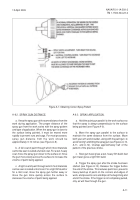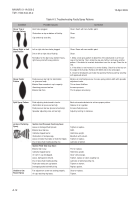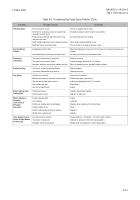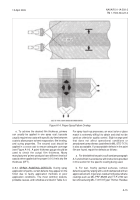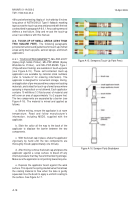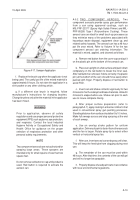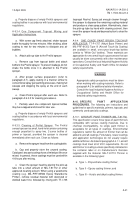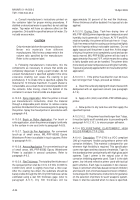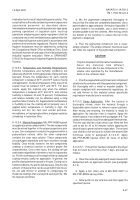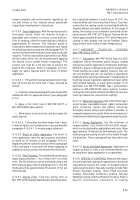TM-1-1500-344-23-2 - Page 191 of 240
A-21
NAVAIR 01-1A-509-2
TM 1-1500-344-23-2
15 April 2009
g. Properly dispose of empty PreVal sprayers and
coating bottles in accordance with local environmental
regulations.
A-9.3.4. One Component Topcoat Mixing and
Application Instructions.
a. With screw cap firmly attached, shake topcoat
bottle thoroughly for two minutes. After shaking, allow
coating to rest for two minutes to dissipate any air
bubbles.
b. Attach pick-up tube to the PreVal sprayer.
c. Remove cap from topcoat bottle and attach
bottle to the PreVal sprayer. To prevent leakage, do not
shake the bottle once it is attached to the PreVal
sprayer.
d. After proper surface preparation (refer to
paragraph A-7), apply coating in a manner similar to
conventional spray gun painting processes, making full
sweeps and stopping the spray at the end of each
sweep.
e. Clean PreVal sprayer after each use. Refer to
paragraph A-9.3.5 for cleaning procedures.
f.
Partially used one component topcoat bottles
may be recapped and stored for later use.
g. Properly dispose of empty PreVal sprayers and
coating bottles in accordance with local environmental
regulations.
A-9.3.5. Cleaning of PreVal Sprayer. The PreVal
aerosol sprayer is a small, hand-held canister containing
enough propellant to spray two, 2 ounce bottles of
primer or topcoat, provided the sprayer is cleaned
immediately after each use. Clean as follows:
a. Remove the sprayer head from the coating bottle.
b. Cap and properly store the unused coating.
Catalyzed, two part coatings have a limited pot life once
mixed. In general, these coatings must be used within
4-8 hours after mixing.
c. Clean the sprayer head by placing the pick-up
tube into a small amount of MIL-T-81772 or other
approved cleaning solvent. When using a waterborne
coating (e.g. MIL-PRF-85582 Epoxy Waterborne
Primer), remove residual material with deionized or
distilled water first, followed by rinsing with TT-I-735
Isopropyl Alcohol. Spray just enough cleaner through
the sprayer to disperse the remaining coating material
and produce a clear spray pattern. Alternatively, clean
the pick-up tube by hand with cleaning solvent, then
invert the sprayer head and depress button to clear the
sprayer.
A-9.4.
ONE OUNCE PAINT BRUSH TOUCH-UP
APPLICATOR. TT-P-1757 (Alkyd Base Primer) and
MIL-PRF-81352 Type III (Aircraft Touch-Up Coating)
are available in small, one ounce brush-top bottles
(similar to "White-Out" bottles). These materials are
appropriate for very small touch-up processes that can
usually be done concurrently with other maintenance
operations. Consult the local Industrial Hygiene Activity
or Occupational Safety and Health Office for detailed
safety requirements.
WARNING
Appropriate safety precautions must be taken
when working with coating materials. Refer to
paragraph A-2 for additional safety information.
Consult the local Industrial Hygiene Activity or
Occupational Safety and Health Office for
detailed safety requirements.
A-10. SPECIFIC
PAINT
APPLICATION
PROCEDURES.
The following are instructions and
guidelines for specific materials, primers, topcoats, and
commonly used specialty coatings.
A-10.1. AIRCRAFT PAINT THINNER (MIL-T-81772).
This specification covers three types of paint thinners
compatible with various coating materials. Due to
chemical incompatibility, no single paint thinner is
acceptable for all types of coatings. Environmental
regulations restrict the amount of thinner that can be
added to aircraft coatings. Fortunately, newer coatings
and application technologies do not usually require
additional thinner. As stated in paragraph A-4.1.1, aircraft
coatings must meet strict VOC requirements. Do not
add thinner to coatings unless specifically indicated on
the container label or on manufacturer’s literature
supplied with the material. MIL-T-81772 Thinner is
available in the following types:
a. Type I – Polyurethane coating thinner;
b. Type II – Epoxy coating thinner; and
c. Type III – Acrylic and alkyd coating thinner.
Back to Top

